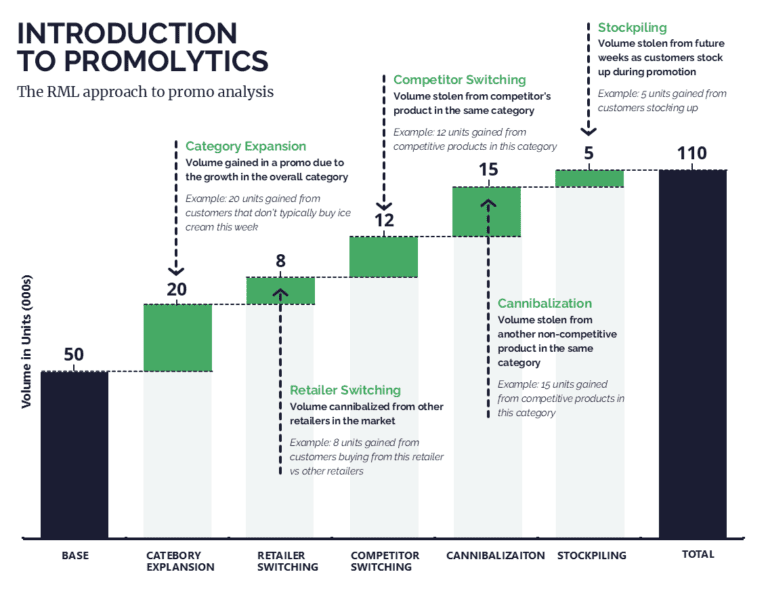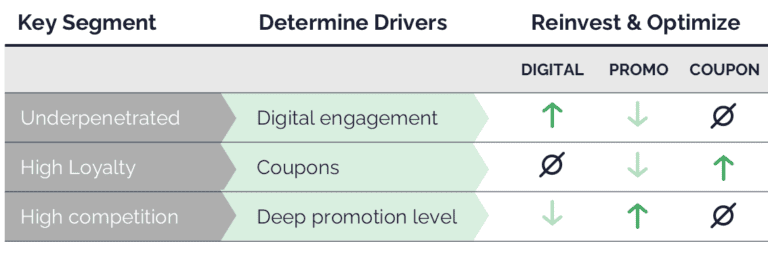Economic uncertainty and increased access to competitive pricing are reshaping consumer priorities. Shoppers are now more price-sensitive than ever, focusing on value over brand loyalty. This shift has intensified price wars across industries, leaving businesses grappling with profitability while striving to maintain market share.
Adapting your Revenue Growth Management (RGM) strategy to meet these changing behaviors is no longer optional—it’s essential. This article explores key consumer behavior trends and actionable strategies to navigate this evolving landscape.
How Consumer Behavior is Changing
Traditionally, consumer purchasing followed a decision tree: category > subcategory > pack size > flavor > price.
Today, that hierarchy has flipped. Price is now the primary consideration, with consumers focusing on how much they can get within their budget.
Key Indicators of This Shift:
This shift is evident in several key indicators: First, there’s a noticeable degradation of base business with a sharp rise in sales driven by promotions. Consumers are becoming more price-sensitive and elastic across various categories, seeking the best deals available. Additionally, shoppers are increasingly trading off between categories to maximize their perceived value, choosing where to allocate their spending based on the most attractive offers. These trends highlight a significant shift in consumer behavior that businesses must carefully monitor and adapt to.
Strategies to Combat the Shift
1. Understand Promotion Incrementality
Using Promolytics
Traditional promo analysis focuses on lift or incremental units but lacks clarity on where those units originate. Promolytics, a proprietary tool, decomposes incrementality into five sources:
Cannibalization (own products) – When a promotion increases sales of a product but at the expense of other products from the same brand or company, reducing overall profitability.
Competitive switch (gaining share from rivals) – When a promotion successfully attracts customers from competing brands, leading to a gain in market share.
Stockpiling (temporary increases) – When consumers buy in bulk during a promotion, leading to a short-term sales spike but potentially lower future sales as they deplete their stock.
Channel shifts – When consumers change where they purchase a product (e.g., moving from in-store to online) due to a promotion, which can impact channel profitability.
Category expansion – When a promotion encourages overall growth in the category by attracting new customers or increasing consumption frequency, driving sustainable volume gains.
Why It Matters:
If a promotion primarily drives cannibalization, the ROI will degrade. Conversely, promotions that expand the category or draw in new customers can maximize profitability.
Pro Tip: Analyze promo incrementality to design promotions that balance market share and margin protection effectively.

2. Segment Customers and Reinvest Funds
Behavior-based segmentation is critical in today’s market. Move beyond demographics and geography to focus on:
- Purchase behaviors: frequency, occasion, price sensitivity, and brand loyalty.
- Reaction to pricing and promotions: Identify segments where deep discounts are necessary versus those less sensitive to price.
Action Steps:
- Use behavior-based metrics to identify key customer segments.
- Reallocate budgets strategically based on revenue drivers for each segment.
- Example Segments:
- High loyalty: Use targeted coupons.
- High competition: Invest in deeper promotions.
- Under-penetrated markets: Focus on digital outreach.
- Example Segments:
- Prioritize change management to align sales teams and stakeholders with the new strategy.

3. Design to Price and Price Pack Architecture (PPA)
Adopting a “Design to Price” mindset ensures your products align with consumer spending habits. This involves designing products to meet specific price points while balancing quality and profitability.
Two PPA Approaches:
- Match: Identify opportunities within existing price discount curves.
- Lead: Develop innovative products to meet unaddressed price tiers.
Real-World Examples:
- Instant noodle cups hitting $1 price points.
- Affordable toothpaste tubes and earbuds meeting specific budget thresholds.
Takeaway: Prioritize total out-of-pocket costs and perceived value ($ per unit) over traditional metrics to align with today’s consumer priorities.
Key Takeaways
To optimize your promotional strategies and drive growth, here are the key insights from the article:
- Understand Incrementality: Use tools like Promolytics to analyze where promotional lift is coming from and adjust strategies accordingly.
- Segment Smartly: Focus on behavior-driven segmentation to tailor promotions and investments.
- Innovate with Purpose: Adopt a “Design to Price” approach to meet new consumer spending behaviors.
These strategies provide actionable steps to refine your approach and stay competitive in a changing market.
Conclusion
Shifting consumer behavior presents an opportunity for businesses to innovate and grow. By understanding the dynamics of price sensitivity, leveraging advanced tools, and adopting behavior-based strategies, you can stay ahead in a competitive market. Adapt now to turn challenges into opportunities for long-term success. Learn more about how our experts help CPG businesses boost market share, revenue, and profitability with real-time insights.




